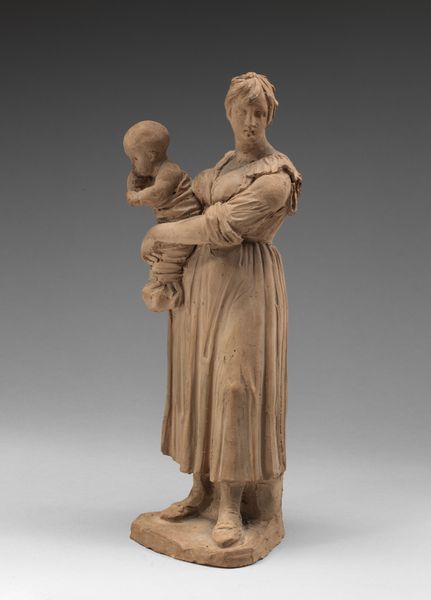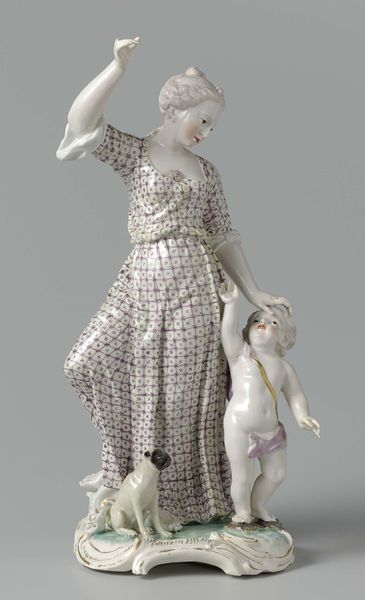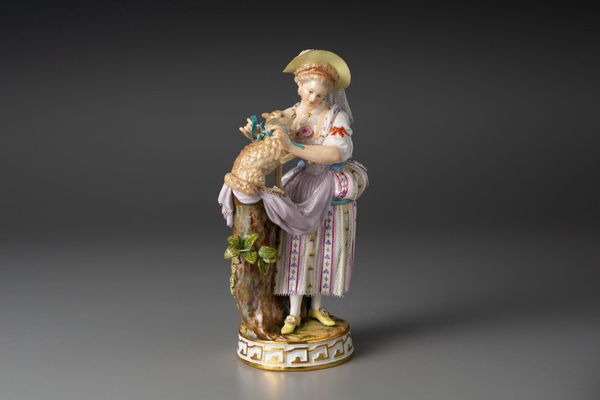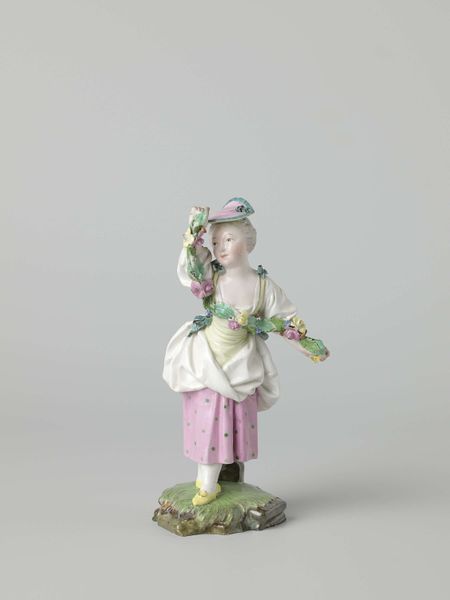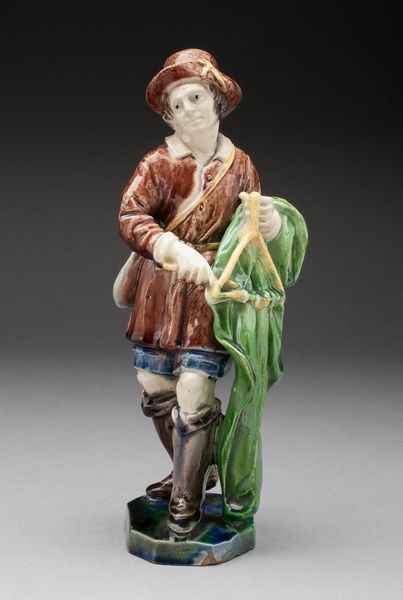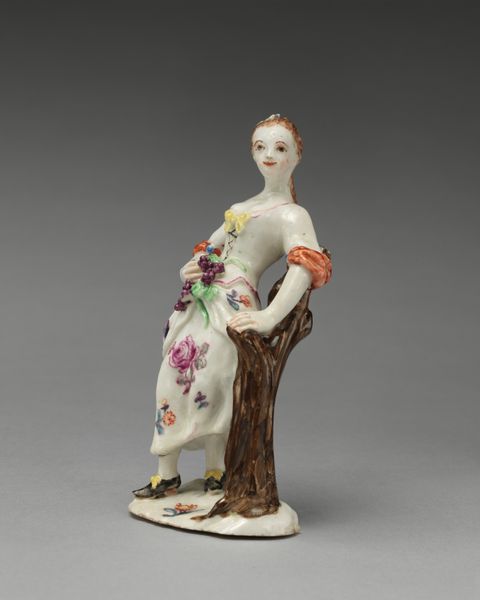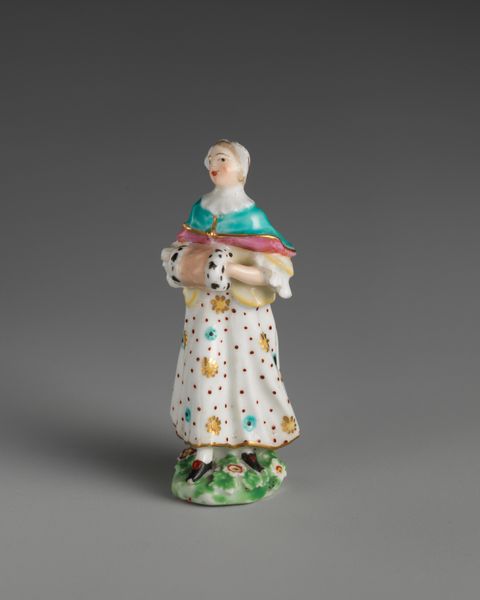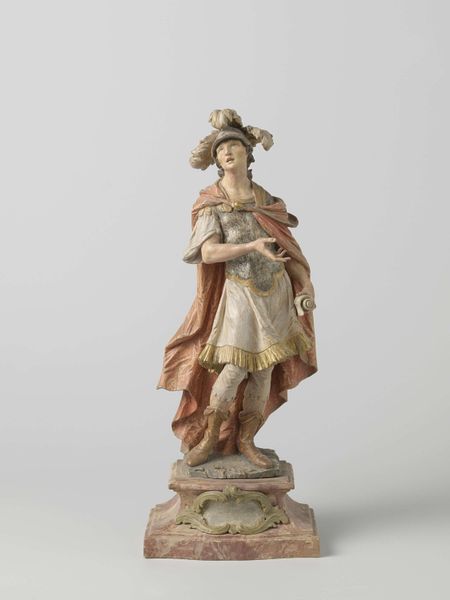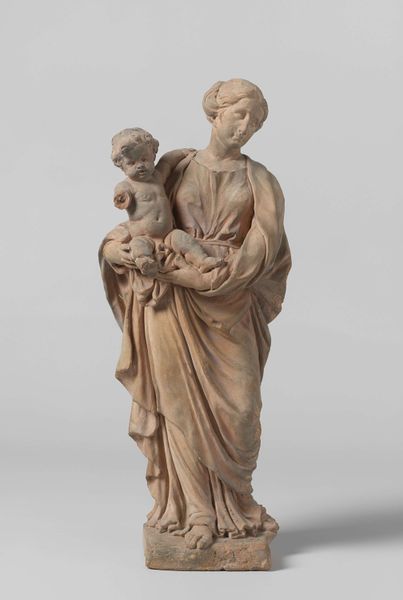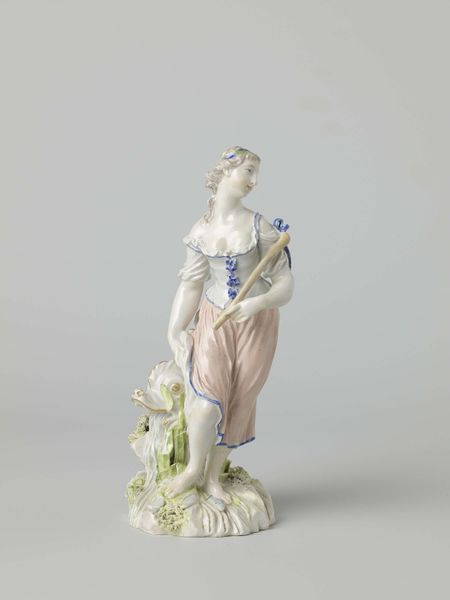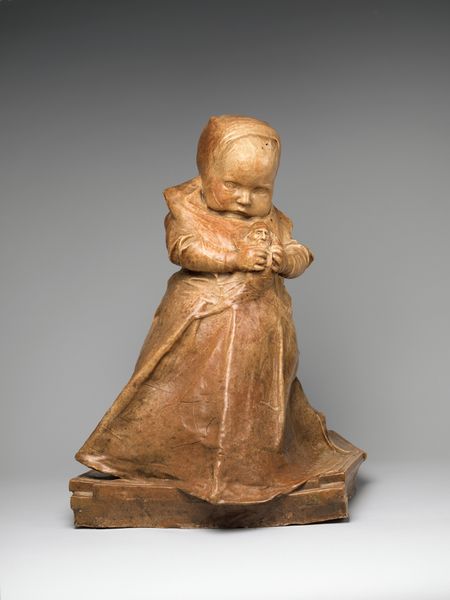
sculpture, wood
#
portrait
#
mother
#
neoclassicism
#
sculpture
#
figuration
#
historical fashion
#
sculpture
#
wood
#
genre-painting
Dimensions: height 57.0 cm, width 29.0 cm, depth 31.5 cm, width 29.0 cm, depth 31.5 cm
Copyright: Rijks Museum: Open Domain
Curator: This carved wood sculpture from around 1775, titled "Woman Holding a Child," presents a fascinating intersection of the neoclassical portrait style with elements of genre painting. What strikes you about it? Editor: Well, immediately the stillness is striking. There’s a rigidity, almost, in both the mother and the child's poses. It’s serene, but perhaps a little…distant? It doesn't exactly exude warmth. Curator: It reflects, I think, a tension present in representing motherhood in the late 18th century. This piece exists in a society that was redefining gender roles, with sentimental ideas of motherhood gaining ground. However, representations of women, particularly upper-class women, often were carefully constructed. Editor: You can definitely see that here, she’s got this sort of crown-like structure on her head, but beyond her elaborate clothing, what is fascinating, iconography-wise, is the contrast between the ornamentation and her very plain face. She looks almost like a blank slate in contrast to her fussy wardrobe. The child, however, with his short haircut and neutral gaze, it's hard to infer what's on his mind. Curator: That resonates with me. This era saw the popularization of what some consider to be "polite portraits" which presented an elevated and controlled depiction. A marker of class status but one presented under this increasingly new guise of respectable, even idealized maternal roles. Editor: It is as if the sculptor aimed to represent maternal virtue without delving into personal emotion, making the universal symbolic power all the stronger. She stands, not so much a woman, but as an enduring symbol of the Neoclassical vision of Motherhood itself. Curator: That distillation is intriguing. What does this carving then say about the politics of image-making and presentation during that time period? There seems a clear focus on respectability, potentially signaling a push back against the excessive indulgence associated with the pre-revolutionary French elite. Editor: Yes, it's hard to overlook the subtle yet potent symbolism present. Motherhood being an ideal that transcended any political reality, and that transcends today. Curator: That balance of the idealized and the ordinary fascinates me, both then and now. Editor: Absolutely. This makes it all the richer, the historical background interplaying with the enduring symbols.
Comments
rijksmuseum about 2 years ago
⋮
The Chinese denied European women entry into Canton. Despite this ban, several Western women nevertheless managed to visit Canton. The Chinese sculptor Chitqua might have made this statuette –possibly a portrait –on such an occasion. Quite exceptionally, the figure is carved from wood rather than modelled in clay, like Chitqua’s other known works.
Join the conversation
Join millions of artists and users on Artera today and experience the ultimate creative platform.
